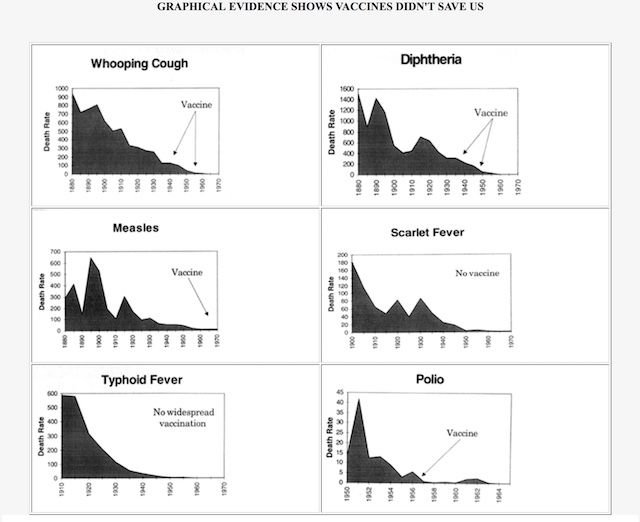The Decline Of Infectious Diseases

Credit for the decrease of infectious diseases, epidemics, and a dramatic decrease of women dying in birth has to be given for the social reformers. Vocal social reform groups relentlessly campaigned for clean water, sewage and garbage disposal systems, improved housing, access to clean and healthy food sources, better-paying jobs for industrial workers, and education for all.

Brian Inglis, Medical Historian and a whole lot of other things...
"Incessant warfare at the frontier, political oppression within its boundaries, and civil disaffection in and around the seat of government, all lead to the kind of inefficiently run, disorganized and dissatisfied society of a kind which is custom made to encourage the spread of an infectious disease, when one is introduced'.

- Plagues have always been associated with the poorer communities throughout human history. Poverty, poor living standards, and malnutrition were the vanguards, the handmaidens of the plagues and infectious diseases. Link
- Philosophers and spiritual leaders have known that the health of the community were dependent on their environment and a virtuous leadership. Where there is corrupt leaders there is always poverty and disease. Link
- Pliny a Roman Statesman during the 6th century wrote in one of his treatise that the Romans were healthy because of their continuous attention to hygiene. Proper hygiene included proper sanitation of human waste and clean water for everyone. Link

A detailed demographic history of London in the late sixteenth and early seventeenth centuries has largely been a mystery. In this article we analyzed a large sample of London parish records, allowing us to reconstruct the spatial and temporal properties of London mortality in the plague era, and to see how these responded to living standards. We found that mortality in the major plagues ran at around five to six times normal mortality, while the impact of plague on richer city parishes fell through time and its impact on suburban parishes rose. Looking at the spatial diffusion of plague, we find a consistent pattern of crisis mortality first emerging in the poor northern suburbs, although this sometimes coincided with its emergence in eastern parishes. Looking at the seasonality of mortality, we found that mortality before 1665 peaked in the autumn as we would expect with plague, but that this pattern persisted for several decades after the supposed disappearance of plague, especially in poorer suburbs of the city..

Fifty percent of the children living in London during 1800 died before the age of five years old. If you have read my “The History of Vaccines,” London was a cesspool. The living conditions are unimaginable to those who live in the West Today. People, multiple families were crammed into one room apartments without plumbing or running water, the air was feted without any means of circulation as well as dark with coal that ran their industry. Most were too poor to heat their poor homes. The water was taken from rivers were open sewers allowed to flow into the river. Edwin Chadwick lawyer who championed the poor published a report on the poor and impoverished of London stated:
"That the various forms of epidemic, endemic and other disease caused, or aggravated, or propagated chiefly among the laboring classes by atmospheric impurities produced by decomposing and vegetable substances, by damp and filth, and dose and overcrowded dwellings prevail among the population in every part of the Kingdom, whether dwelling in separate houses, in rural villages, in small towns, in the larger towns - as they have been found to prevail in the lowest districts of the metropolis.

”That such disease, wherever its attacks are frequent, is always found in connection with the physical circumstances above specified... and where the removal of the noxious agencies appeared to be complete, such disease almost entirety disappears.
Because of the Edwin Chadwick's speaking out for the poor galvanized the elite and middle class were inspired to the champion construction of a complete sanitation system for everyone. Many of the elite class fought the battle because of the cost. Chadwick didn't address poor wages and nutrition for the working class, and he would eventually step away from his leadership position because of his narrow views.

The sanitation campaign won their funding, new housing policies, improvement in living standards and working conditions introduced by the British government through policies like the “Public Health Act (1848) started creating a healthy environment for all citizens. As the cities cleaned up their act infectious diseases and deaths also started to decline, this was before the mandatory vaccine policies began being strictly enforced. During that time vaccines were given by rubbing a mix of cow teat pus, horse hoof pus, and other putrid materials onto open wounds….

When the Panama Canal was under construction Major William Gorgas, the United States Sanitary Officer reduced yellow fever by imposing hygiene and sanitation for the white construction workers. Sanitation and hygiene were not introduced to the Black laborers, and the deaths from yellow fever and other disease continued unabated.

Because of Pettenkofer’s efforts galvanized a major movement to clean up Munich fresh water was provided to all houses, which also included a working system of sewage disposal. Typhoid deaths declined dramatically, from 72 per 1,000,000 in 1880 to 14 per 1,000,000 population in 1898. The correlation between the decline of infectious diseases and cleaning up cities is hard to miss!

The Deadly River cholera:
"It is a disease that rapidly spreads whenever there is a serious breakdown in sanitary services .... During an epidemic in 1854, Snow was able to prove that areas of London supplied by water from the relatively dean upper Thames were much freer from incidences of cholera that those sections of the city supplied with water from the human sewage fouled lower Thames. By 1866, much of the main drainage scheme of the London metropolis was established and water companies were supplying much of the city with water from the uncontaminated upper Thames. With sanitary reform cholera was virtually eliminated from England'.

Herbert M Shelton who wrote, Hygienic Care of Children wrote:
"It is now everywhere admitted that the decline of typhoid fever, along with typhus, cholera, bubonic plague, yellow fever etc has been due to hygiene and sanitation. The serum is pushed for commercial reasons only.”

Stella Lowry wrote in the British Medical Journal (1/20/1990):
"Sanitation has had, and continues to have more impact on health than any advance in medical science ... in 19th century Britain epidemics of cholera and typhoid were common until the introduction of clean drinking water and safe sewage disposal.

My favorite Professor Rene Dubos on tuberculosis:
"It must never be forgotten that tuberculosis is not an inevitable accompaniment of human life, as is shown by the fact that it has long remained practically non-existent in many primitive societies and that it is disappearing as an important medical problem from some limited sections of the most highly evolved modern communities. It is only through gross errors in social organization and mismanagement of individual life, that tuberculosis could reach to catastrophic levels that prevailed in Europe and North America during the nineteenth century, and that still prevails in Asia and much of South America today".

Dr. H.O. Lancaster (Medical Journal Australia 18/11/1967) writes about the decline of death rates from infectious diseases:
"Australian mortality rates have been relatively low over the last 100 years and have declined greatly at the lower ages. The declines have been due to many causes. The diminished rate of passage of infective organisms from one member of the population to another has been significant; important factors here have been the geographical, social and prophylactic isolation of cases, improved water supplies, and a general improvement in the standard of living. Surgery has played some part in the decline of mortality from violence. Medical therapy had few active drugs until the introduction of chemotherapeutic and antibiotic agents quite recently. Active immunization has played some part but passive immunization has been unimportant. Endocrine therapy has been unimportant. Nutrition has been at a high level. Public health measures against insects have been important. Social factors are difficult to separate but have been of great importance. Genetic measures have been quite unimportant.”

From the book “Health and Healing” by Dr. Andrew Weil:
"Scientific medicine has taken credit it does not deserve for some advances in health. Most people believe that victory over the major infectious diseases of the last century came with the invention of immunizations. In fact, cholera, typhoid fever, tetanus, diphtheria, whooping cough, and the others were in decline before vaccines for them became available - the result of better methods of sanitation, sewage disposal, and distribution of food and water."

There have been enough books and articles written correlating sanitation and hygiene to the reduction of infectious diseases, you could fill up my little town's library. Once I figured out I couldn’t find the data I needed to write my papers from online databases, I started searching online libraries and hit gold! Evidence linking infectious to disease to environment and living conditions comes from studies on the incidence of disease between different social classes. People who live in the lower classes have a higher incidence of respiratory and infectious disease when compared to people living in upper-income brackets.

Englands Labour Government in 1977 organized a working group chaired by Chief Scientist at the Department of Health and Social Security, Sir Douglas Black. He was tasked to investigate inequality and health. Sir Black said:
Further evidence linking the infectious disease to environment and living conditions comes from studies on the incidence of disease amongst the different social classes. It has been found that people living in the lower classes have a higher incidence of respiratory and infectious disease than people living in the upper classes. In England, 1977, the Labour Government established a working group chaired by the then Chief Scientist at the Department of Health and Social Security, Sir Douglas Black, to investigate the inequalities in health. At the time, the Secretary of State for Social Services said:

"Social class differences in mortality begin at birth. In 1971 neonatal death rates - deaths within the first month of life - were twice as high for children of fathers in social class V as they were in social class I. Death rates for the post-neonatal period - from one month up to one year - were nearly five times higher in social class V than in social class 1..
The study was finished in 1980, and the results proved the poverty of the working poor, their working conditions, poor living, and nutrition were the leading cause of poor health.
The whooping cough was higher in homes that were crowded and had poor ventilation. The families had little money or social standing. Professor Stewart stated, “a child’s social class is three times more important than vaccination in influencing whooping cough outbreaks:
"In the epidemic of 1974, notifications of whooping cough were significantly higher in crowded households!'.

The data shows the true reason for the decline in death rates from infectious diseases are correlated with better nutrition, living and working conditions, education in hygiene and sanitary practices along with education in health and living standards on a community level.
Lecture Part 2Herbert M Shelton wrote from one of his articles, “Why We have Epidemics:”

“Scarlet fever was always every bit as fatal as diphtheria. That it declined in every way, both in incidence and in so-called virulence, as rapidly as did diphtheria, and all without a vaccine or an anti-toxin, should have vital meaning for every truth seeker. When a number of epidemic or so-called infectious diseases all decline together and immunizing agents are available for but one or two of these, it means that some common factor is responsible for the total decline, although credit for the decline in one or two diseases is given to the immunizing agent for commercial reasons. If cholera, bubonic plague, English sweat and typhus fever decline and, ultimately disappeared from Europe and America at the same time that smallpox declined and disappeared, while there was a vaccine for smallpox only, what had the cause of the decline of other diseases to do with the concomitant decline of smallpox?... if yellow fever disappeared from New Orleans after General Butler cleaned up the city and no vaccine was used, what has sanitation had to do with the disappearance of other epidemic diseases? Is vaccination a medical substitute for personal and community cleanliness?
- Are Germs The Cause Of Infectious Disease? - Part 2
- Are Germs The Cause Of Infectious Disease?
- What Is In A Vial Of Vaccine? Part 2
- Lectins and Gut Health
- Save Our Pineal Gland?
- What Is In A Vial Of Vaccine?
- Eugenics, Cults, and Vaccines
- The History Of The Vaccine Court-Conclusion
- Our Sugar Addiction and The Slave Trade
- For The Greater Good
- All Female Mutants Are Here!
- Soil and Gut Health
- Where Did The First Anti Vaxxers Come From?
- History Of Vaccines Series-Ten
- History Of Vaccines Series-Nine
- History Of Vaccine Series-Eight
- History Of Vaccine Series-Seven
- History Of Vaccine Series-Six
- History Of Vaccine Series-Five
- History Of Vaccine Series-Four
- History Of Vaccine Series-Three
- History Of Vaccine Series-Two
- History Of Vaccine Series-One
I will flag comment spam at 1% strength. If you keep on spamming my post, I will flag you at 100%. I don't care if you have limited English abilities, write a couple of sentences about this article, no copy-paste, please. I will flag: one sentence comments, links to your blog and begging for up-votes and follows. Also, I will åflag comments that have nothing to do with my blog's article. I will also check your comment section to see if you have been comment spamming on other blogs.


 A link to My Blog
A link to My Blog
Diarrhea is still rising in my country
I've read that iron supplements given by food aid workers and in infant formula can contribute to Diarrhea...I wrote about that in one of my articles...
But clean water, food, housing all are important. I hope your country can work on helping the poor..
Where are you from @kengtong?
Myanmar 🇲🇲 I will check out your article
তোমারা ওরস্যালাইন ব্যবহার করো না?? এটা diarrhea জন্য অনেক ভালো.@kengtong
I don’t understand your language
A disease caused by a parasitic organism and transmitted from one person to another by the transfer of the parasite is known as an infectious disease.We shall study the cause, spread and prevention of a few selected infectious diseases prevalent in our country so that we will know how to guard ourselves against them and other similar diseases.
It really seems very interesting to me since dealing with health, we should not lose details. Thanks for letting us know.
Bacteria are unicellular prokaryotes and visible under a compound microscope. Though many bacteria are harmless,some are parasitic and produce diseases. Bacteria can enter the host body through the mouth, nostrils, cuts and bruises on the skin. They multiply rapidly, producing toxins in high concentration to affect health. Some bacterial diseases in man are Tuberculosis, Leprosy, Cholera, Typhoid, Diphtheria, Pertusis, Tetanus, Plague, Pneumonia, Syphilis, Gonorrhoea, etc.
Awesome photogarphy sir 💜
Thank your sir for share with us (Are Germs The Cause Of Infectious Disease? - Part 3)
next one get how many days sir ?
Great great post i dont have much to say because everyrhing i written in their. The current situation the world is in right now is that the community can no longer handle it themselves while the government doesn't care to support them .
AIDS and Ebola both spread easier in Africa than the west. Its clearly a poverty thing. Instead of looking for chemical cures we should raising living standards
So truee! Like what the adage says: "Prevention is better than cure."
In my country indonesia many infectious diseases spreading rapidly like HIV, malaria, influenza and etc, the government have to educate the people to life healthily, thank you very much for your sharing to us valuable post, success always for you @reddust
Indonesia is like Philippines. I hope our countries can overcome these diseases.
I like your post very much to me. I hope this is always better post than ever.
I had no idea about all this information, I had heard about toxemia but I did not know everything that this implied. I hope you find yourself well and without migraines
for example our area of Papua, where environmental health is so bad, and recently there are extraordinary mattress diseases, they are still living with nature, not knowing adequate medical treatment,
and the philosophers' theory is also very suitable, our country is still very corrupt, so the social gap is very high impact on poor health,
thank you for postingI am more confident with the theory you quoted @reddust, I am paying attention from the lifestyle of urban community with clean circle with village people with bad environment, they have different age and health level,
between health and economics I think interdependent, people with poor economic levels are very susceptible to disease, because they do not have time to think about environmental health, they only focus on feeding the family,
I think if we want people to adopt a healthy lifestyle that affects their health, the government should pay attention also to their welfare level,
and I am more confident with your theory after I see the incident in my area, only we still still consider germs is the culprit of all diseases
Impressive article...l must say that diseases are mostly for lower or poor class people because they don't do more for their good hygiene....even in most of areas of our country and many others pure water is not available, so how could one prevent himself from germs and infectious agents...
Really it's beautiful sir
Great interesting post sir
thanks for sharing
My mother told me about those diseases that propagated throughout the ancient times. She said that the Tuberculosis became a hopeless diagnosis in their village (Philippines). Also due to the poverty, hospitals weren't capable of giving medicines for patients. The politicians in their area decided to teach proper sanitation. But now there are medicines that can cure this dangerous airborne disease.
Cholera became a big threat also in their place. This caused death to many people. Their source of fresh water is a river where they released their execrated wastes and wash their clothes. But now, basic knowledge on filter helped them to decrease the number of infected people.
I hope the "poverty" will not become a reason for curing diseases. Diseases are everywhere. It is not nature that brought us these deadly things but... we, humanity, did it.
I agree with this wonderful article!
Germs definitely are the cause of infectious disease but if can maintain some hygiene and precaution it can be stopped
It truly appears to be exceptionally fascinating to me since managing wellbeing, we ought not lose points of interest. A debt of gratitude is in order for telling us. Marvelous
Well yes it's one of the top causes of diseases which is why it's important to keep a good practice of hygiene to minimize the possibilities of getting diseases.
Yeah germs are the cause of infectious diseases. At first they enter our body via air, water and damage our cells. They are cause of many diseases like Typhoid, Diarrhoea, cholera, Pneumonia etc. Our awareness is only the solution to get rid of these diseases otherwise we suffer and get a treatment which sometimes costly. And thank you @reddust for describing the important topics and aware us.
nice & informative post. water is life if it is not safe then it causes life...so clean water is very very important for us.
In my opinion the cleanliness is really important aspect but i personally think that still there are many secrets related to diseases and this is because we heard some kind of diseases which are still mystery for the medical professionals, so this means that the only reason cannot be suit for one good or one bad, there should be combination of efforts which still are mystery. Thanks for sharing this deep studied and informative post with us and wishing you an great day. Stay blessed. 🙂
In a developing country like mine, the first program must be Water Sanitation (WatSan Project), that is the main problem I had faced since my assignment with International Red Cross 6 six years ago. After WatSan Program was established and then following by livelihood program, i was involved directly to disseminate hygiene promotion to community. I worked in very remote area supporting Canadian Red Cross and Amrican Red cross who were actively involved in WatSan, Livelihood and Hygiene Promotion. So I am sure to avoid the plague, environment sanitation must be considered as the first priority. Clean Water supply, Latrine, and healthy food, better income solution. those things the government must take into great attention. hope it will make the world become a better place to stay. So yes I am sure the germ is one of the most factor of infectious disease @reddust
Regards
Professor Rene Dubos is very very talented professor my favorite too . . . . and i agree with his saying ..
thanks for sharing dear!!